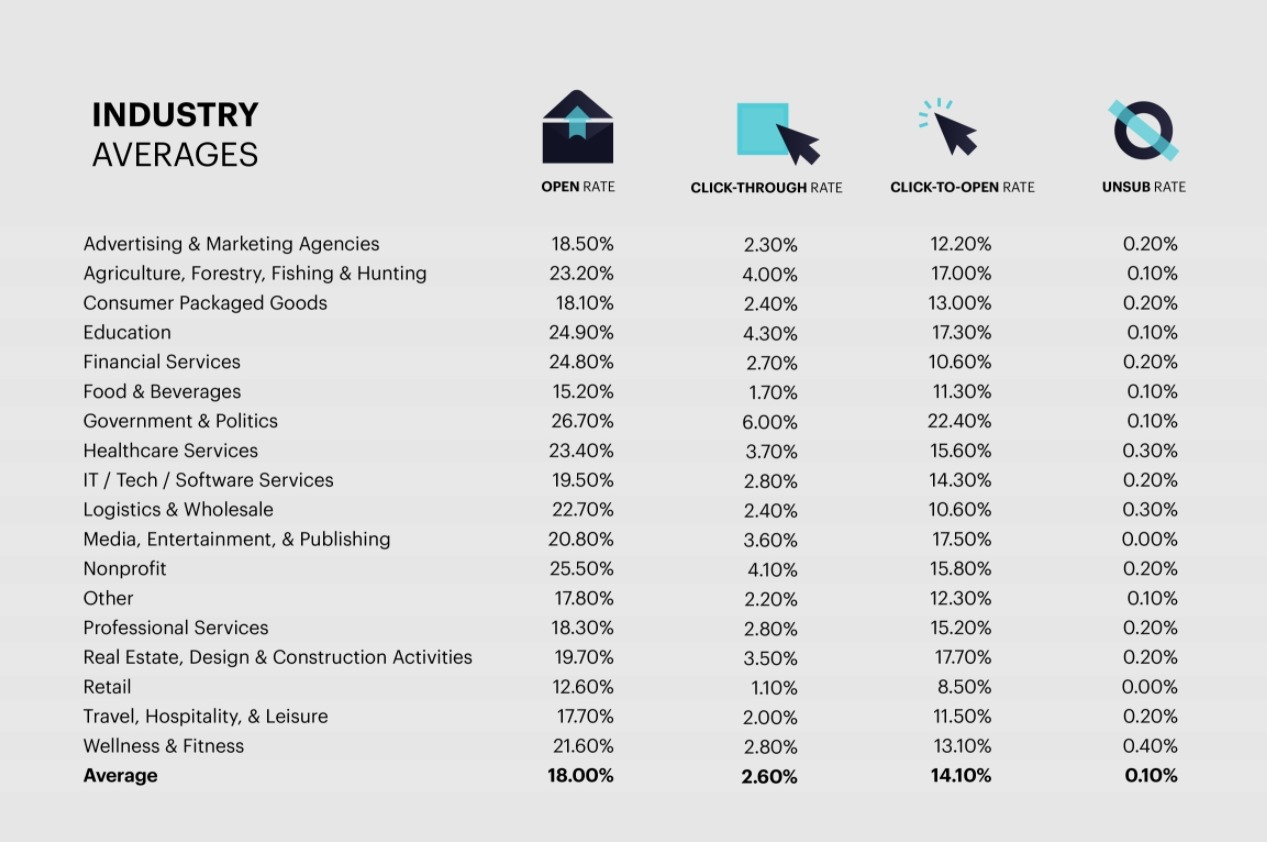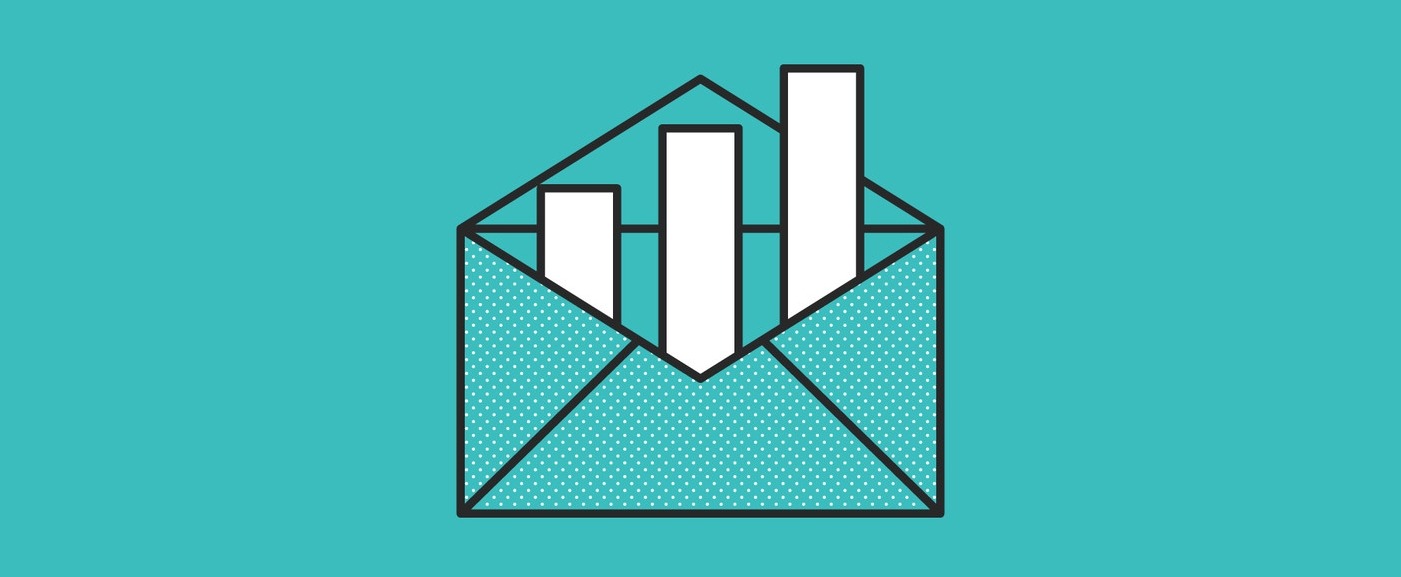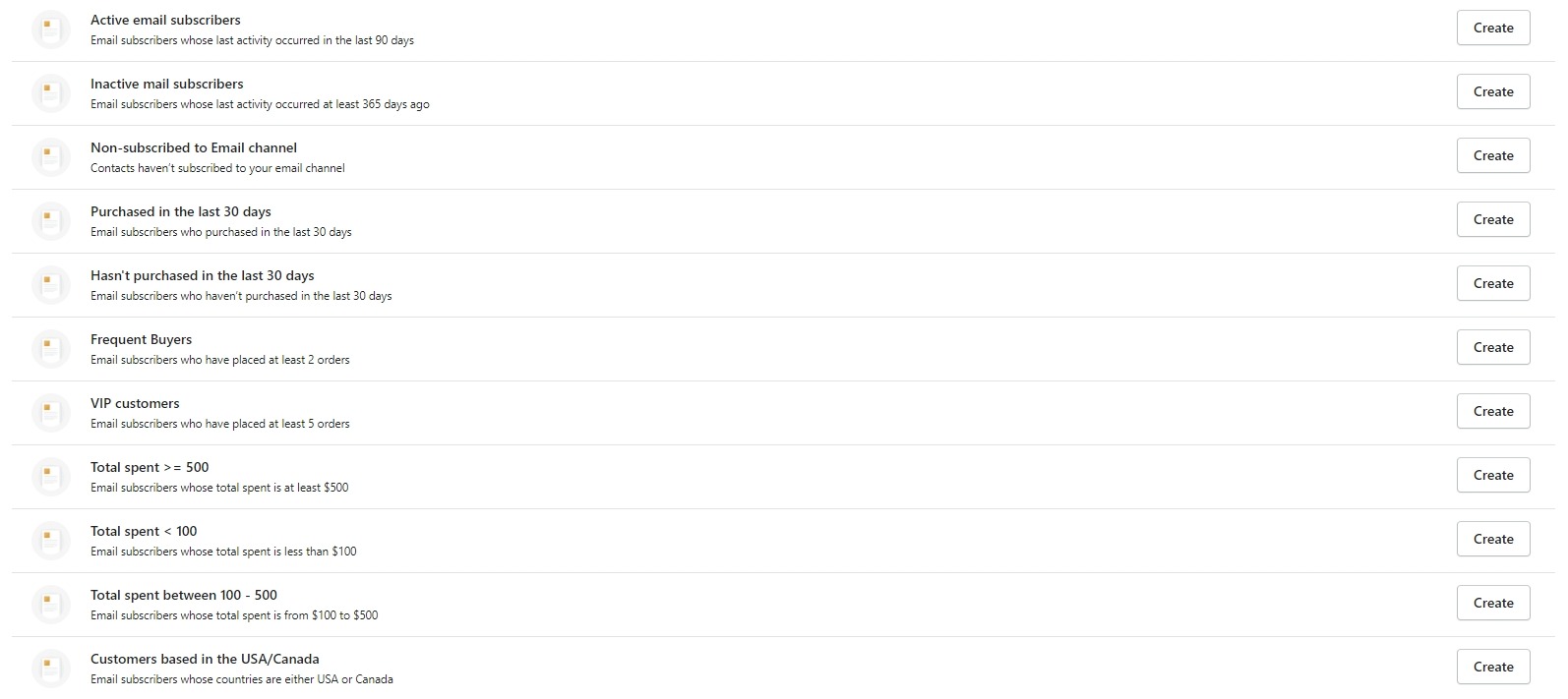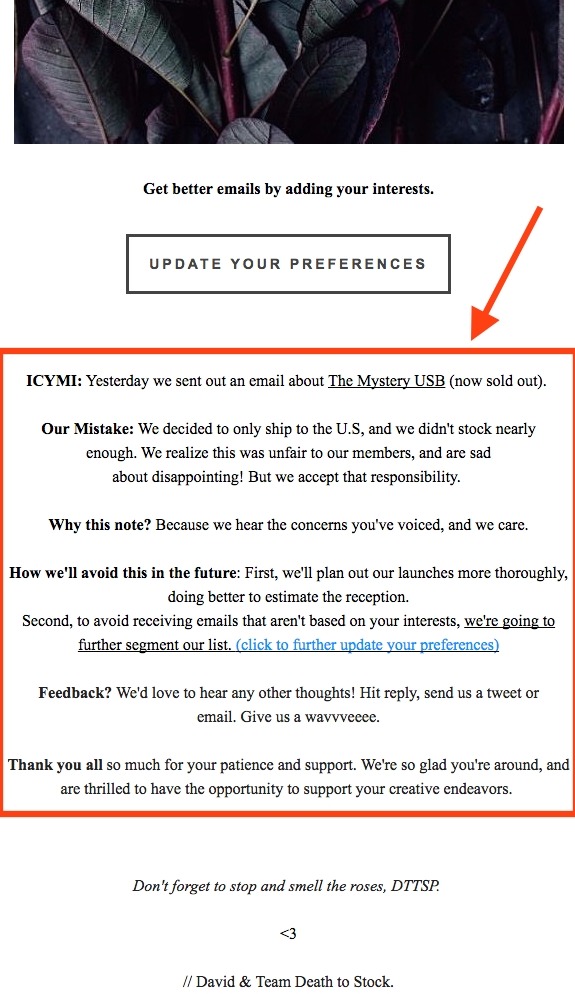How To Write A High Opening Email Campaign? (10+ Tips)
Now that casual conversation with consumers has basically moved onto platforms like Facebook and Instagram; people seem to forget that the primary tool of reaching out for businesses is still email marketing.
But I don’t really have to tell you about the importance of email marketing, right? You’re probably already no stranger to multiple promotional emails from various big eCommerce companies (even ones you don’t remember subscribing to). If the biggest players are still taking leverage of email marketing and making millions, why don’t you use it too?
However, as an email marketer, this puts you in a difficult spot. If your email marketing campaigns fail to stand out, they will just be overshadowed by emails from other companies. Then, it is just another part of the deluge of emails that no one wants to read - which wastes your time, effort, and opportunity.
I don’t want you to end up like that with your email marketing campaigns. So, in this article, I will teach you how to create a high opening email campaign that people will 1) actually open and 2) appreciate. Let’s get started!
The science behind an email campaign’s open rate

The science and data presented to you in this section will help you understand how people open your email marketing campaigns and help increase the email open rates, which in turn positively affects the overall performance of the email marketing strategy.
Before I dive into some data, you and I should understand this metric first. Many people consider the email open rate as the number of recipients who click to open your email. It sounds logical enough, but, unfortunately, that’s not the case for email marketing.
An email is counted as opened only when one of the following situations occurs:
-
The recipient enables your email’s images to be displayed in a full view or in the preview pane of the email.
-
The recipient clicks on a link in the email.
You get the idea, only when the recipient lets your email fully load or click on some link can you count that email as opened. But, how can you calculate the email open rates?
An email service provider (ESP) calculates your emails’ open rate by taking the number of recipients who opened your email and dividing it by the number of not bounced sent emails; in other words, successfully reached the recipients.
For example, if you sent 1000 emails, and 100 of them failed to reach the recipients, this leaves you with 900 delivered emails. Of these 900 emails, let’s say you have 100 that were opened. This means the email campaign has an open rate of 11% (100 emails opened from 900 delivered).
The undelivered emails cannot be opened, which is why you can’t count that number in the open rate percentage. Now that you understand email campaigns’ open rates let’s see the stats among industries to see how you can identify a high open-rate.
The average email open rate among industries
B2B email marketing has been one of the most popular marketing channels for several years and the average number of promotional emails sent to consumers continues to increase over time. Many would think that the open rate for email marketing is on the decline.
The good news is, that wasn’t the case. From 2015 to 2018, the average email open rate was steady, staying around 24% globally. However, the average open rate dropped in 2020 to 21.3%. I’m not really sure why, but maybe because all companies started sending emails during the pandemic?
Despite that, does a decrease in the email open rates signal the downfall of email marketing? Of course not. It’s not the first time email open rates fall, and it’s certainly not the last time.
The good news is that by looking at historical data, we can see that each time we see a decrease, it’s often followed by a strong period of growth for email marketing. So, we can expect an increase in this year, 2021.
Before you can get more people to open your emails, you would need to answer some questions like: What is the current email open rate? How many people currently read your emails?
This is where the industry benchmark for open rate reports in email marketing comes in. This is important for you to understand how the industry is changing with email marketing on the whole and your own benchmark based on the email campaign performance. This number is often available from your email service provider.

Here’s a look at the email open rates based on an email campaign performance in each country. As you can see, email open rates differ from country to country.

In 2020, the average email open rate across all industries was 18%. So if you are able to have an open rate of higher than 19%, then you’re doing great!
If not, no need to worry. You should know your email subscribers better than any other sender. For example, suppose your campaigns consistently have a 15% open rate, which is slightly below average, yet your email campaigns still deliver results. In that case, it’s obvious that you don’t underperform even if the “industry average” suggests you are.
Of course, the average statistics are to be taken lightly. For instance, in the insurance industry, the open email rates differ from those in the healthcare industry. And open rates in Asia differ from those in Europe.
Then what is the best approach to have a high opening email campaign? Let’s find out about that in the next section.
How to write a high opening email campaign

If you are on this article, there is a high chance that you want to increase your email campaign’s open rate. Well, let me spill the bean with ten best tips on creating a high opening email campaign.
1. Keep the list fresh
Do you know if your subscribers still want to receive emails from you?
A common piece of advice is that it’s crucial to send emails to subscribers on a consistent basis, so the list doesn’t go stale. But, over time, email subscribers can go stale too. Some may have changed their email accounts or maybe just aren’t interested in your brand emails anymore.
So an excellent way to increase the email open rate is by keeping your list fresh and full of engaged subscribers. And you should also periodically remove inactive subscribers.
An inactive subscriber is someone who has not engaged with any of your emails in the past 6 months or even more. Before you remove them from the list, try sending a win-back email campaign to re-engage with the inactive subscribers.
With our app AVADA Email Marketing, you can segment the audience based on their level of inactivity and send automated win-back email campaigns. Remember to use a well-crafted email subject line to draw recipients’ attention and show your brand’s personality. Some examples are like: “Is the love gone?”, “Do I bore you?” or “Come back, we miss you.”
Another way to keep the email list fresh is by checking in with the subscribers every once in a while. You can ask if they want to update their preferences or their information. This way, you remind them that they can control how they engage with your brand emails.
If you are trying to revive a list full of cold subscribers, try conducting a survey. If they are ready to answer your questions, they can get a free gift (like a $10 gift card, for example).
This tactic kills two birds with one stone: it invites them to re-engage with your emails by offering a gift while also providing the information you need to continue to create content they will love.
2. Segment the list
One of the most significant factors to affect your email open rate is whether or not your subscribers think your emails are relevant to them.
Then how to increase your emails’ relevancy? By segmenting the email list.
The research found that around 39% of marketers who segmented the email lists saw a higher open rate, while 28% had a lower unsubscribe rate, and 24% had better deliverability with more significant revenue.

You can start by creating tags for your subscriber groups based on behavior, such as buying frequency or purchase behavior. So when you have new paying customers, you can send them different types of emails from someone who has not purchased anything in the store.
You can also segment the list based on demographics or interests. And you can send different campaigns based on the specific products they purchased.
That said, did they subscribe to your email list in the first place? If it was through downloading an ebook on a particular topic, you can create a segment and send them more emails with content on that specific topic.
Once you can create these segments, it is much easier to decide what subject lines and messages you should write to entice them to open your email marketing campaigns and engage with the messages.
(On a related note, your email subscribers should be gained organically. Don’t ever rely on paid lists, or your campaigns’ relevance will plummet.)
3. Craft excellent subject lines
When it comes to having a high open-rate email campaign, your subject lines are everything. Your task is to make the subject lines stand out as much as possible.
eCommerce companies have used email marketing for years, often using the same subject line formulas as others. As a result, these subject lines are often ignored by consumers. Your subject lines need to be creative and draw recipients’ attention quickly to break away from the competition.
Here are some tips for you to craft excellent subject lines:
-
Use actionable language like “download”, “ask”, “get” to let recipients know what they can do with the email
-
Entice curiosity with the subject line, but don’t get too clever. You should make them curious enough to click open, but without feeling clueless about what you’re talking about.
-
Use a conversational, fun, or joking tone.
-
Insert numbers. Just like blog posts, numbers have a special power to draw the eye.
-
Speak in the style and language that your subscribers use themselves, such as when they talk with their friends.
-
Personalize when possible to speak to the specific needs of a customer
If you want to see some great subject line examples, take a look at our posts for email subject lines based on times and events:
4. Avoid the spam filters
Spam filters for emails have gotten much more sophisticated in the past several years and prevent many spammers from accessing consumers’ inboxes. However, they are not perfect, and your emails - even the best ones - can still get marked as spam, sent to the spam folder, and never get opened.
If you want to maximize your email marketing campaigns’ reach, you need to do everything possible to avoid your emails being flagged as spam.
Here are what you can do to keep your emails from getting stuck in the spam folders:
-
Send through verified domains.
-
Send campaigns from a good IP address, an IP address that hasn’t sent spam in the past or used by someone else.
-
Make sure all subscribers actually opted-in to receiving emails from you.
-
Keep your emails’ code clean.
-
Ask subscribers to whitelist your emails and add your email address to their address book.
-
Don’t bait more opens by using deceptive subject lines.
-
Avoid the excessive use of language that sounds too salesy (these are words that trigger the spam filter like “buy”, “free”, “discount”, or “cash”).
-
Personalize the “To:” field of your email campaign.
-
Include your company location.
-
Include an easy way for subscribers to unsubscribe or opt out of your email list.
5. Time your campaigns well
Timing has a huge effect on whether or not your emails get opened by subscribers, so think carefully about what day and time you send your emails out.
It’s hard to figure out the perfect time on day one, but if you perform some A/B tests, you will be able to identify which time frame performs best with your recipients and explore more time frames in future campaigns.
You may be wondering if anyone else has already done some email timing tests that you can benefit from. Well, guess what, we have just the article for that:
Read more: When is the best time to send marketing emails?
But the bottom line on the sending time for email is this: How should your email arrive in a day of the life of your particular audience.
Ask yourself these questions: What do they do in the morning, afternoon, and evening? What does a workday look like to them? How early do they rise in the morning? How late do they stay up at night?
All of these questions will help you test and find out the best time to send your marketing emails.
6. Write amazing content for every email

When a recipient opens your email, you’ve basically had a higher open rate. So the battle is over, right? Why should you care about the actual content of your email affecting the open rate?
Well, your email’s content is actually crucial to achieving higher open rates because if your subscribers are satisfied with your content, they are much more likely to keep opening your emails in the future. In the best scenario, they even begin to expect to receive your emails eagerly.
On the other hand, if subscribers are displeased with what they got in your email, they aren’t going to keep opening your emails, and may even unsubscribe.
The question is how to make sure that your subscribers are happy with the email content? Make it awesome is the answer. It may sound easier than done, but you can create much better content for your emails quite easily.
Your emails can be the source for precious resources, like an epic blog post, a free eBook, or a webinar.
The lesson is to know that you aren’t sending emails just because everyone else does. Every single email that gets sent to your list must deliver something of real value. The value of your emails equals more loyal subscribers, and your open rates will subsequently increase.
7. Optimize the email for mobiles
More than half of consumers use a smartphone to check and open emails nowadays. This means you can’t ignore mobile users or a mobile version of your emails. Your emails must be appealing on mobiles for a better open rate.
The obvious tip here is to design your email as mobile-friendly (with responsive formatting and suitable media) as possible, but also understand the fact that mobile screens are smaller, so you should have short subject lines that are viewable on mobile devices.
Aside from keeping the email subject lines concise, here are some more tips to keep your emails more appealing for mobile users:
-
Keep the email format simple with a single column and under 600px wide.
-
Don’t assume all your images will be displayed correctly (Android mobiles do turn off images by default). So make sure your emails look good even without images.
-
Use smaller images to reduce the load time.
-
Use a large font since small fonts are difficult to read on mobile devices.
-
Have a large call-to-action button since people can tap on larger buttons with their thumbs more easily.
-
Don’t place two links on top of or next to one another so users won’t tap on the wrong link by accident.
8. Write like a friend
When writing emails, try to put business thinking to the side and write like a true friend. This is the best way for your emails to really appeal to the subscribers and make them open your emails.
A corporate sentence like, “We’re offering the best deals to our customers!” sounds distant and stuffy. They are receiving your emails, why are they being addressed in the third person?
A more friendly alternative for your subject line or email copy can be something like, “John, you’ve gotta check out this deal for your birthday!”
Making the email seem a lot more personal can make it less likely for your recipients to take a quick glance and simply delete your message to move on with other tasks in their lives.
Remember that, in this age of information, every recipient can easily have a reason to ignore your marketing emails. They have way more things to do than looking for a reason to read them. But, by writing like a friend, you can appeal to them on a more personal level and stand a better chance at getting more open.
9. Has your own personality

Personality is how you make friends and create a strong, instant connection with people. If your brand sounds personal, entertaining, it is much more likely to stick out in subscribers’ minds.
But what if you don’t find your brand full of personality? It’s not easy to be humorous and clever. Also, how can you fit your personality attempt into the narrow constraints of the email subject line? That will be somewhat tricky.
Fortunately, you don’t need to become a comedian in order to create an interesting email. The important thing is that you understand the email recipients intimately. If you understand their likes and dislikes, it will be much easier to sound interesting, pull off a funny joke, or add a tongue-in-cheek reference.
Just because emails are a tool to send information, it doesn’t have to be all serious and business-like. Think of email as a great opportunity to let your brand’s personality shine and build a meaningful relationship with the subscribers on your email lists. Providing a lovable experience for the audience begins with how you communicate with them.
In the example above, Death to Stock Photos apologized for an email they’d sent the previous day by using concise and personable language, while still adding some personality like the phrase “Give us a wavvveeee” to humanize the company.
10. Start writing to just one person
When you draft your message content and the subject line, it’s natural to think of how you can make the thousands of recipients open your email when they receive it.
However, my last tip is this, it’s much more effective to write as you are speaking to an individual person. This means you write a personal subject line with a personalized message for a specific person in mind.
To write this way, you’ll need to really understand your buyer persona. You need to know their problems, their values, their desires, their likes, and their dislikes.
If you have some trouble with writing like that, ask for a quick five-minute chat with your subscribers. On the call, you can ask them and help yourself understand your subscribers’ needs and their thought processes.
Spending some time communicating with your subscribers will be time well spent since it helps you immensely. You not only can improve your messaging but also can showcase your products and services better.
Final words
This guide can help any email campaign get a higher open rate but don’t get discouraged if you don’t see a better result with your email marketing right away. Writing a high-opening email campaign is a mixture of art and science, so give yourself some room to experiment and discover what tactics work best for your brand and your subscribers.
What else do you think can be effective for an email campaign’s open rate? Please share your idea with me in the comments.
New Posts






